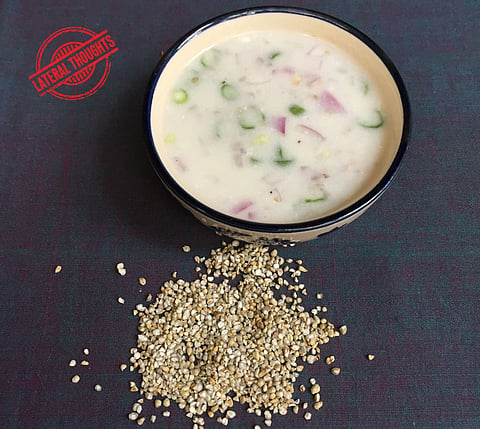Boost indigenous millet recipes over packaged products
Millets are finally getting the attention they deserve. They are no longer food for only the poor, the health freaks and school children who consume mid-day meals.
2023 was declared the International Year of the Millets by the United Nations and major food processing industries have entered the market. Until now, the space was occupied only by local manufacturers and cottage industries who sold roasted bajra (pearl millet) or ragi (finger millet) chips in unbranded, plain plastic packets or even loose by weight.
Read more: Are millets safe from biopiracy?
Some companies entering this market, like ITC Ltd, Saffola and Tata Soulfull. These companies are using both large millets like jowar (sorghum), bajra and ragi and small ones like kodo, kutki (little millet) and proso (proso millet) to produce noodles, pasta, vermicelli, dosa mix, breakfast cereals, muesli and snacks
While some of these products are 100 per cent millet, others are merely fortified with them. Their focus is on taste and additives are used to improve the taste of these fibrous and bland millets.
A quick look at the labels on packs shows these products are quite similar to existing products in the market, which do not have millets. They have sugar, salt, palm oil, hydrogenated refined oil, stabilisers, anticaking agents and acidity regulators that are hallmarks of junk foods.
This may not be the way forward to popularising millets. The idea should be to ensure that millets retain their healthfulness. Adding sugar, salt and allergens while processing seems counterintuitive.
Millets are rich in minerals like iron, magnesium, phosphorus, potassium, and vitamins A and B. They also have complex carbohydrates and fibre, which help in increasing satiety and maintaining good gut health.
They have a low glycaemic index, so they are good for people with diabetes. They are gluten-free and less likely to cause allergies.
Promoting freshly cooked meals based on millets might work better. Many restaurants in India already have millet-based menus and are doing very well. Organic food markets have already tuned in to the trend.
Such meals are being served to delegates at the Group of 20 meeting, too. Parliamentarians, too, enjoyed millet-based fare a few weeks ago.
But most of the time, these foods are sold as niche products and are expensive. Street vendors should be supported and trained to use these grains to make millets more popular.
Vendors are already selling some traditional millet-based recipes. For example, in Tamil Nadu, koozh is a popular street food, which is prepared from locally available millets such as bajra and ragi.
Instead of ultra-processed packaged foods, one way could be figuring out how to package the boiled and fermented millets used to prepare koozh. This should not be difficult, considering that packaged dosa batter is now easily available in the market.
Food Safety and Standards Authority of India could support this as part of their mandate on safe street food. The Authority is already promoting millet-based recipes on Twitter.
Increasing the consumption of millets needs more effort and this can happen only if it becomes part of the average Indian grocery list and enters the average Indian kitchen.
To an extent, this already is a norm in the country and jowar, bajra, ragi and sama (barnyard millet) are used to prepare traditional recipes and consumed with relish, at least during the festivals. Instead of replacing them with processed products, preparing them should be made easier.
The idea behind the international year is to promote millets as they are climate resilient and consuming them can help the world meet at least six United Nations-mandated sustainable development goals. Millets have to move beyond the niche category and become affordable for this.


